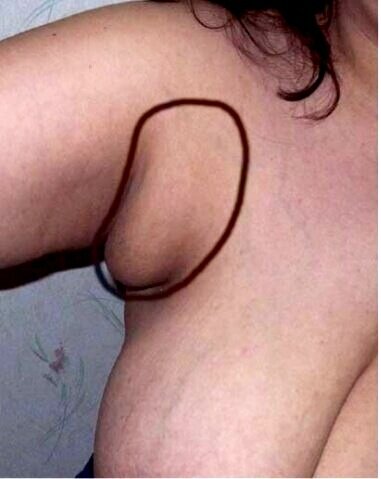To get more information about the following procedures, click on the links to download the PDF files.
- Sentinel lymph node biopsies [ download information leaflet ]
Sentinel node biopsy is a surgical procedure used to determine if cancer has spread beyond a primary tumour into your lymphatic system.The sentinel nodes are the first few lymph nodes into which a tumour drains. Cancer cells travel to the sentinel node before spreading to the other lymph nodes. Sentinel node biopsy involves injecting a tracer material that helps the surgeon locate the sentinel nodes during surgery. The sentinel nodes are removed and analyzed in a laboratory. If the sentinel nodes are free of cancer, then cancer isn't likely to have spread to other nodes in the armpit.
- Wide local excision (WLE) [download information leaflet]
Wide local excision (or breast conserving surgery), is the removal of the cancer with a margin (border) of normal breast/fatty tissue around it.
- Wide local excision (wire guided) [download information leaflet]
Occasionally the cancer or abnormality in the breast cannot be felt. A marker is therefore required to guide the surgeon to the area. This is done either by using a skin marker under ultrasound-guidance or by placing a wire into the abnormality. The wire and tumour are both removed during surgery.
How a breast hook-wire looks like
- Simple Mastectomy [download information leaflet]
A simple mastectomy involves the removal of all the breast tissue including some of the skin over the breast and the nipple. There are a number of reasons when mastectomy is recommended instead of lumpectomy. It is usually recommended when the cancer affects a significant proportion of the breast tissue, or when there are two or more areas of cancer which are apart from one another.
Mastectomy
- Axillary node clearance [download information leaflet]
Axillary node clearance or axillary lymph node dissection (ALND) is an operation performed under a General Anaesthetic which involves the removal of some or most of the lymph glands in the armpit. ALND is done to:
see if cancer has spread from the breast to one or more lymph nodes
this information is used to determine the stage of the breast cancer.
remove any cancer that may have spread to the lymph nodes and reduce the risk of cancer coming back (recurring) in the axilla
help plan further treatment
Axillary Node Clearance
- Hadfields Procedure / Total duct excision [download information leaflet]
Hadfields Procedure
A Hadfields procedure is an operation carried out to disconnect and remove all the major nipple ducts. This procedure is usually carried out to diagnose the cause of nipple discharge and stop persistent nipple discharge.
- Ultrasound guided biopsy of breast lumps [download information leaflet]
Breast biopsy using ultrasound
This procedure is done under local anaesthetic and uses a needle to take a sample of breast tissue. It may be done to evaluate abnormal findings on a mammogram or breast ultrasound, or during a physical exam. To determine whether someone has breast cancer, a biopsy must be done. Tissue (or fluid) from the abnormal area are removed and examined under a microscope. The accuracy of this technique is around 98% - therefore it is unlikely that a cancer will be missed.
- Ultrasound guided drainage of breast abscesses
Breast Abscess
Ultrasound-guided aspiration is the preferred technique for the treatment of most breast abscesses since it is associated with little scarring, faster healing, improved cosmetic result and possibly more cost effective. The need for a general anaesthetic is also avoided. Many studies have shown that the success rate for this technique is more than 90%.
[download information leaflet]
- Accessory breast tissue
Accessory breast tissue is a relatively common congenital condition in which abnormal excess breast tissue is seen in addition to the presence of normal breast tissue. This normal variant can present as a mass anywhere along the milk line which extends from the armpit to the pubic region. This excess breast tissue may not appear until enhanced by sex hormones during puberty or early pregnancy. This condition can also be accompanied by the presence of extra nipples.








